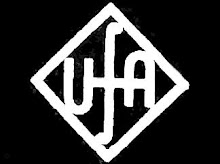Le Voyage Dans La Lune
The IMDb, or International Movie Database, has some problems.
I was there and tried to post a correction about a George Méliès movie, but they wanted too much info for account verification, so I boogied, leaving them to find their own epiphany.
This is a bit more than nitpicking, because the Turner Classic Movies Channel has been showing The Story Of Film, directed and narrated by Mark Cousins, and this documentary on the history of film has some large and unusual errors of facts.
A friend brought this to my attention, and reproduce his email below. I checked into the Méliès matter, and was amazed to find that not only did Cousins allegedly have the info wrong, but so did the IMDb. All this took about 5 minutes to verify and check.
The problem I addressed is that George Méliès made a film named La Lune A Un Metre, and another film named Le Voyage Dans La Lune.
(Le Voyage Dans La Lune maybe be immediately recognizable since it contains that memorable image of the rocket ship lodged in the eye of the Man in the Moon.)
The English title for La Lune A Un Metre is The Astronomer's Dream, and is able to be seen on YouTube, where the English title credit will clearly state The Astronomer's Dream.
The English title for Le Voyage Dans La Lune is A Trip To The Moon (which itself has problems of a nitpicking nature, but I will save that for a PS.)
IMDb has La Lune A Un Metre = A Trip To The Moon, and this seems to be the source for the problem. Within the IMDb discussion forum on La Lune A Un Metre the writers touch on this confusion without definitely identifying it.
Here is the email:
I tried to watch The Story of Film for one more episode. But as I mentioned, I find his narration so irritating, with every sentence going up at the end and finishing in a question like some ValleyGirl-speak, that I turned the sound off and watched it with closed captioning. That helped, but didn’t correct some of his stupider comments.
In giving examples of Gregg Toland’s deep focus in Citizen Kane, he shows the scene where Cotton emerges from the office in the background while Kane types out his review in close up on the left hand of the screen.
Of all the great examples of deep focus used in Kane, he picks the one shot that is not done in deep focus, but was a split-screen shot.
He misidentifies Melies' “A Trip To The Moon” 1902, one of the most famous of all pioneer films, as the “La Lune A Un Metre” 1898.
[...]
He mistakenly dates the clip of DeMille's Squaw Man that he shows as 1918 instead of 1914. De Mille did remake Squaw Man in 1918. But it is the 1914 version that is the most significant one, and its claim to fame is that it was the very first feature film shot in Hollywood.It seems that fact checking was poor. Even a trip to IMDb would not clear it up, since IMDb could have been the source of the error. Mark Cousins based his film upon his 2004 book The Story Of Film, and we wonder whether the factual error in-gathering started there. Mr. Cousins seems to have not checked the "experts", and from that one may conclude that there is a good deal of misinformation out there.
He says that Von Strohiem’s 1928 Queen Kelly “never saw the light of day”. Swanson eventually took control of the film and released her version in Europe and South America in 1931. In 1985 Kino International obtained all rights to the incomplete original version, restored it using stills, and released it on VHS.
In discussing Gone with the Wind he identifies the two people standing under a large tree in silhouette in the iconic sunset shot overlooking Tara as “the lovers”, when all the world knows is was Scarlet and Thomas Mitchell.
Unbelievably he calls United Artists (Pickford,Chaplin,Fairbanks, Griffith), American Artists.
One click to IMDB would have cleared up these egregious errors.
If my friend's critique holds up, some of the mistakes are truly bizarre coming from a film expert such as Mr. Cousins.
--
PS.
The title Le Voyage Dans La Lune and its translation as A Trip To The Moon bothered me as soon as I began looking into this last night.
The problem is that the French "dans" indicates to me "movement within a place, or into a place", as when I would say I went into a room: I would use "dans" for "into", or if I walked about within a room, I would use "dans".
But for "movement to a place", I would use the French preposition
à
and a trip to the moon would be un voyage à la lune.
So we are bedeviled by titles being mixed up, and one of them seems odd to me. One of them seems to say "Voyage On or In the Moon", rather than "Voyage To The Moon".
So I went to YouTube, and I watched the film in the Méliès area, and the "trip to" the moon actually takes no more than 50% of the running time, whereas the rest of the film is devoted to a journey and its events "on and about the Moon".
Méliès conceived of his film as dealing primarily within the events on the Moon, not the events in getting to the Moon.
Méliès conceived of his film as dealing primarily within the events on the Moon, not the events in getting to the Moon.
Whew!


















3 comments:
Picky, picky, picky . . .
Oh, btw, I think it's "boogied". :-)
Maybe "boogered"...
What about when you wrote that Alexander Stevens was born in Taliaferro County, instead of Wilkes County?
Post a Comment